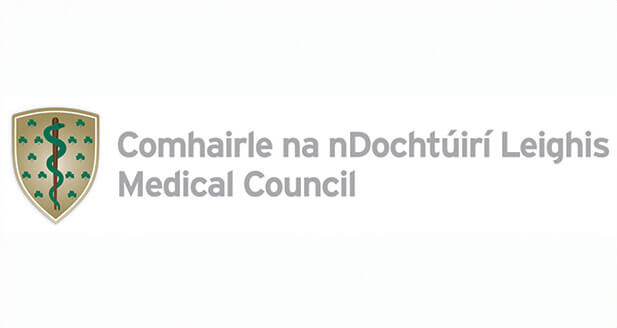
I can’t stop touching my hair. It’s a furious, frenetic kind of twirling that I do when my wig is off. The novelty of having hair has not worn off yet and I want to run my fingers through its coarse tresses as much as I possibly can because tomorrow, it might be gone.
On April 30, I had my hair cut. It was the first time in over five years that anyone had touched my hair because, during that time, I was completely bald.
I don’t have cancer. I never did. I have alopecia.
My condition doesn’t seem to sit well with other people; armchair experts assure me that my hair loss is caused by internalised stress, anxiety, or depression.
If I seem bitter, I’m not. I get it. I thought that too. I believed I deserved to have alopecia which as a result left me more susceptible to infection, with a compromised immune system, and without hair — my crowning glory.
After approximately four years of treatment with consultant dermatologist Dr Dmitri Wall at Hair Restoration Blackrock (HRBR) in Dublin, over 90% of my hair has grown back. The feeling is a trepidatious elation — tinged with relief, fear, and disbelief.
When my hair first started falling out, it felt like the universe was punishing me for all the times I had made poor decisions, lost the rag, and let myself down. With every strand of hair that fell out, I felt like less of a woman.
I believed the energy healers, the well-meaning friends, the reflexologists, and the acupuncturists who ascribed my symptoms to poor mental health, lack of manifestation, and misaligned energy.
My sister was diagnosed with stage 4 breast cancer in 2019, and around the same time, I noticed clumps of hair falling out.
It might sound silly but as I stood in the shower with mounds of hair at my feet, it felt like karma. I was the one who should have cancer. She had three incredible children. I had no kids, no partner, no house, and no permanent job. I felt I was worth so much less than her.
With a bit of investigation, I discovered that my hair loss had probably dated back to when I was a teenager. I had my eyebrows waxed less than a handful of times and they never grew back, despite investing in expensive lotions that promised regrowth.
According to the Mayo Clinic, people typically lose and gain between 50 and 100 hairs a day. With alopecia, the hair that’s lost isn’t replaced so it’s more noticeable.
My hair loss was progressive, starting with 50-cent-sized pieces smattered across my scalp that could be hidden with a strategic comb-over and hairbands. Within six months, the bald patches were becoming increasingly hard to hide. People at work began to draw their own conclusions, one even asking me if I had had brain surgery.
I desperately did not want to be bald. I tried everything: topical treatments, serums, keratin treatments, coconut oil, specially made trichologistformulated creams, oral supplements like vitamin D and keratin, hair elements testing, dietary modifications and LED light therapy. I spent about €2,000 going down this route, all to no avail.
Overactive immune system
I convinced myself that each supplement and therapy was working until one day I looked in the mirror and the only thing looking back at me was desperation. I was literally clinging onto the last piece of hair like it was the only thing binding me to my identity as a woman — and it needed to go.
I got a wig a few months before I shaved my head and started feeling a little bit like me again.
It wasn’t until I met consultant dermatologist Dr Dmitri Wall at Hair Restoration Blackrock in 2019 that I realised I wasn’t manifesting some kind of negative juju as a response to my sister’s illness.
The initial consultation was lengthy. I filled in several forms disclosing my symptoms and had photographs taken to document the process. Dr Wall diagnosed me with severe multi-focal alopecia areata. He explained that my immune system was overactive and attacking the follicles in the head.
I’m aware I wasn’t disfigured but rather riddled with insecurity and conflicting emotions. I felt truly ugly, vulnerable, and full of shame without the thing that I felt made me a woman.
I spent the best part of three years avoiding all social gatherings and isolating in my room, convincing myself that I wasn’t “that type of person”. Hair Restoration Blackrock could not have been a more inviting clinic. From the receptionists to the nurses and my consultant, each person I dealt with was sensitive, knowledgeable, and accommodating.
Deciding the right course of treatment depends on the patient’s medical history and their long-term plans. I tried minoxidil tablets (the same active ingredient used in Regaine) with steroid injections in the affected areas.
While I had some success with this treatment, it didn’t resemble a full or almost full regrowth so in August 2021, Dr Wall prescribed an immunosuppressant called methotrexate used to treat inflammatory conditions, including rheumatoid arthritis, psoriasis, and Crohn’s disease. It was as a “slow burner”, as it typically takes at least four to six months to see a benefit from it.
This immunosuppressant has many risks, which Dr Wall described in detail. There is a high risk of foetal abnormalities should you become pregnant, so it is imperative that I took two pregnancy tests before starting the drug to ensure that this does not happen. I had an intra-uterine device inserted and was also recommended to use barrier contraception like condoms.
After about four months, I started seeing some regrowth and was prescribed a higher dose. I had to take it with folic acid, reducing the risk of possible side effects like nausea, abdominal pain, mouth ulcers, raised liver enzymes, and bone marrow toxicity.
Although there was some growth, it was obvious that methotrexate would not produce the effect I desired and I was still wearing wigs. It was time to try another treatment. Dr Wall is a pioneer in the use of Janus (JAK) inhibitors to treat alopecia. JAK inhibitors interfere with the signals in the body that cause inflammation.
Careful monitoring
I have to take monthly pregnancy tests as there is a high risk of foetal abnormality when on these drugs. I need to have blood tests (every one to three months) done by my GP who forwards the results to Dr Wall to be monitored closely. Because I am on other medication, he needs to monitor the function of my organs such as my liver and kidneys.
A 2022 study published in the journal Frontiers in Pharmacology titled ‘The efficacy and safety of JAK inhibitors for alopecia areata’ enrolled 1,845 patients and 95% of those tested showed higher hair growth rates than the placebo.
I was prescribed the JAK inhibitor tofacitinib under the brand name Xeljanz. It comes through the high-tech service at the pharmacy under a separate script from the other drugs, like, say the minoxidil.
After several months, my hair started to grow back, wispy on the crown and downy tufts of salt and pepper popping up here and there. In six months, I had almost a full head of hair.
I have had some negative side effects since going on this medication including severe acne and increased cholesterol but both are being monitored closely.
Dr Wall provided a series of options to treat the acne including topical and oral treatments. I’m currently taking the acne drug Roaccutane and find it extremely effective. All the medications I was prescribed are available under either the medical card payment scheme or the Drugs
Payment Scheme which caps at €80 per family per month.
Before, he died AA Gill spoke about the cancer treatment drug, nivolumab — how accessing it could have prolonged his life. Reading this last year made me realise how grateful I am to be able to access my medication. It’s not life or death but baldness is a cruel form of identity theft and seeing my hair grow back has given me back the agency I so desperately needed in my life.
The appointments with HRBR were not cheap — the initial consultation for a new patient lasts approximately an hour and costs €400. This includes an in-depth discussion and medical assessment followed by macro photography and analysis. Follow-on appointments cost €250. It’s the best money I have ever spent.
Not only did Dr Wall help me understand what was going on with my body, he explained every possible outcome including short-term and longterm side effects, interactions with other medications, and how each medication could impact my quality of life. Instead of a quick fix, he developed a long-term treatment plan.
What I do know is that my hair is back now. It’s bleached blonde and cut into a pixie crop, inspired by my favourite actor, Michelle Williams. I’m still getting used to having short hair and wearing my wigs in some situations.
But the most important thing? I feel like me again. I don’t cry every time I look in the mirror. I smile, knowing that I am incredibly lucky to have met the right doctor and accessed the right treatment for me.
Mary Cate Smith









